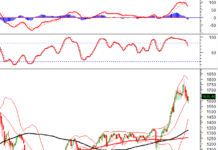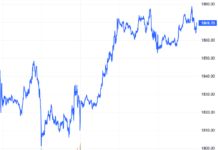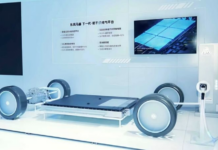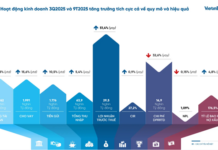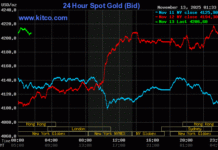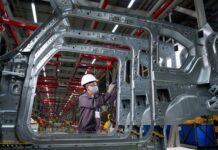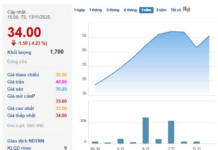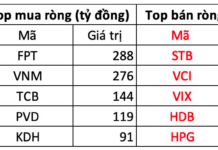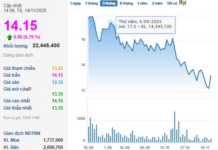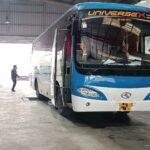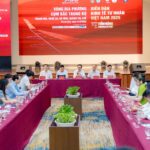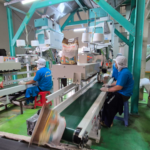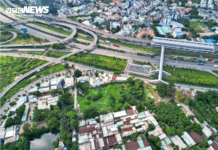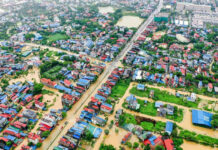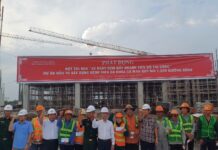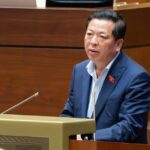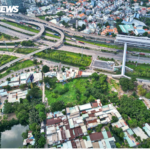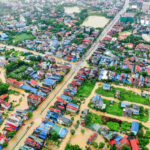In the afternoon of August 7, 2025, at the Government Headquarters, the Prime Minister hosted a meeting with Mr. Hironori Kamezawa, President and CEO of Mitsubishi UFJ Financial Group (MUFG), one of the world’s largest financial groups and one of the three “Big Banks” of Japan.
During the meeting, the Prime Minister proposed that MUFG collaborate on developing an international financial center in Vietnam. He also applauded MUFG’s initiatives in supporting Vietnam’s goal of achieving net-zero emissions by 2050, as well as their efforts in fostering entrepreneurship, digital transformation, and green finance in the banking sector.
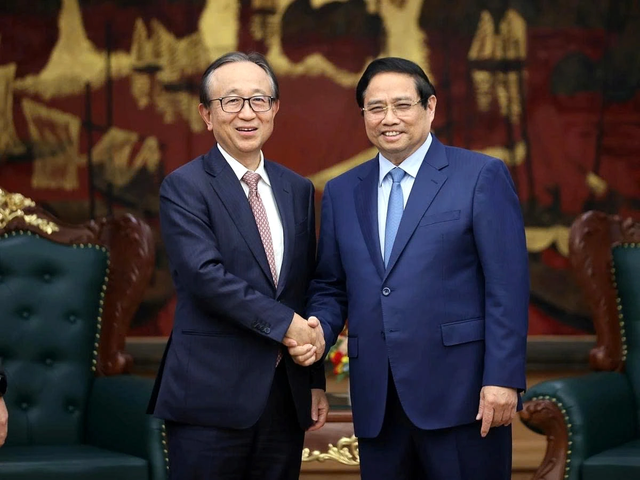
The Prime Minister met with Mr. Hironori Kamezawa, President and CEO of MUFG, on August 7 in Hanoi. Source: VGP
Mr. Hironori Kamezawa emphasized that Vietnam is one of the most attractive investment destinations in the region. He also expressed MUFG’s pride in contributing to Vietnam’s economic and social development.
At the meeting, the Prime Minister and MUFG leadership agreed on MUFG’s commitment to supporting Vietnam’s access to capital from the Asia Zero Emissions Community (AZEC) for green growth and circular economy initiatives. This aligns with AZEC’s goal of achieving large-scale decarbonization in Asia.
AZEC: Launchpad for Asia’s Decarbonization Efforts
The Asia Zero Emissions Community (AZEC) was proposed by former Prime Minister Fumio Kishida in 2022 and launched by 11 partner countries in 2023. It serves as a platform to promote decarbonization processes in Asia, targeting carbon neutrality while also achieving economic growth and energy security.
The 11 partner countries include Japan, Australia, Vietnam, Brunei Darussalam, Cambodia, Indonesia, Laos, Malaysia, the Philippines, Singapore, and Thailand.

Representatives of the partner countries of the Asia Zero Emissions Community (AZEC). Source: JapanGov
JapanGov stated that Asia’s decarbonization is key to achieving global carbon neutrality. Driven by economic growth and increasing energy demands, Asia currently accounts for more than half of global carbon emissions (as of 2024).
In the context of ASEAN, the energy sector, including direct fuel combustion and electricity use, is the largest emitter of greenhouse gases. Within this sector, electricity and heat production is the top emitter, followed by direct fuel combustion in transport, manufacturing, and construction industries.
Meanwhile, Japan has made significant progress towards its net-zero goal by reducing its carbon emissions by approximately 20% compared to its 2013 levels.
Decarbonization Efforts within AZEC: Initial Achievements
To achieve simultaneous decarbonization, AZEC is enhancing cooperation in technologies related to green hydrogen and ammonia production, as well as carbon capture, utilization, and storage (CCUS).
As of 2024, over 350 specific projects are underway with collaboration between the public and private sectors, including approximately 70 Memorandums of Understanding (MOUs) signed ahead of the AZEC Leaders’ Meeting.
For instance, Mitsui OSK Lines, Ltd. (MOL), a leading Japanese shipping company, is developing a CO2 carrier to establish a global carbon capture and storage (CCS) hub in Malaysia.
MOL is also actively building a value chain for clean hydrogen and ammonia in Thailand.
AZEC’s presence and efforts underscore the global nature of climate change adaptation. The energy transition cannot be accomplished by a single nation or organization; instead, it demands co-creation beyond national boundaries, involving governments and citizens alike.
Green hydrogen and ammonia are potential solutions for sustainable energy transition in Asia. They serve as clean fuels for transportation and industrial applications.
Green hydrogen is produced through the electrolysis of water (H2O) into hydrogen (H2) and oxygen (O2), utilizing renewable energy sources such as solar, wind, or hydropower.
Hundreds of Proposals from Businesses at the Local Round of the 2025 Private Economic Forum: Many Issues Addressed Promptly.
The local dialogue sessions have garnered a wealth of insights and proposals from the business community, all aimed at fostering the growth of the private economic sector in this new era.
‘Mega-Project’ $20 Billion Petrochemical Refinery: Avoiding Past Pitfalls
The construction of the Dung Quat National Petrochemical and Energy Center, with a staggering investment of over $20 billion, is a testament to the capabilities of Vietnamese enterprises. This ambitious project serves as a pivotal milestone, testing the mettle of local businesses in terms of execution and operational prowess.
Vietnamese Products Take Center Stage in Thailand: A Remarkable Leap Forward
With an impressive projected revenue of $700 million for this product in 2025, we’re set to reach new heights and surpass records.

